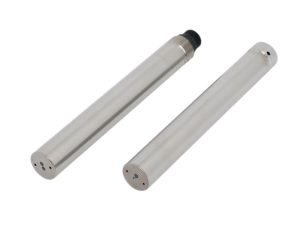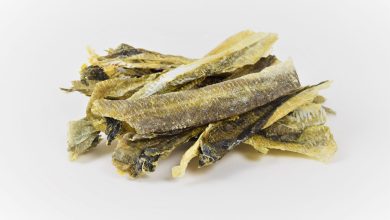How Chlorophyll Sensors are Shaping the Future of Crop Health Management

As the agricultural industry faces the pressures of a growing global population, climate change, and limited natural resources, the need for innovation in crop management has never been more critical. Traditional farming methods, while effective, often fall short when it comes to meeting the demands for increased productivity and environmental sustainability. That’s where chlorophyll sensor come in. These innovative tools are revolutionizing the way farmers monitor and manage crop health, offering real-time, data-driven insights that enhance decision-making, boost yields, and promote sustainability.
In this article, we’ll explore how chlorophyll sensors are shaping the future of crop health management, focusing on their role in early detection of stress, precision farming, and environmental sustainability.
What Are Chlorophyll Sensors?
Chlorophyll sensors are devices designed to measure the chlorophyll content in plant leaves. Chlorophyll is the green pigment responsible for photosynthesis, the process by which plants convert sunlight into energy. The concentration of chlorophyll in a plant’s leaves directly correlates with its health and ability to photosynthesize effectively.
By measuring how much light is absorbed and reflected by the plant’s chlorophyll, these sensors can provide valuable insights into the plant’s condition. Chlorophyll sensors can be handheld devices, mounted on drones or tractors, or integrated into satellite imagery for large-scale monitoring. They offer a non-invasive, real-time solution to understanding plant health, which is crucial for optimizing crop management.
How Chlorophyll Sensors Help Detect Early Signs of Stress
In farming, stress can be caused by various factors, including drought, pest infestations, nutrient deficiencies, diseases, or extreme weather conditions. Detecting these stressors early is crucial to preventing crop damage and ensuring that plants receive the necessary care.
Since chlorophyll is directly involved in photosynthesis, any disruption to a plant’s health often leads to a decrease in chlorophyll production. This reduction can be detected using chlorophyll sensors long before visible symptoms (such as yellowing leaves or wilting) appear. Early detection allows farmers to address the problem quickly, often preventing further damage and minimizing crop loss.
For instance, if a chlorophyll sensor detects a drop in chlorophyll levels due to water stress, farmers can adjust irrigation schedules accordingly. Similarly, if a sensor identifies a nutrient deficiency, such as a lack of nitrogen or magnesium, farmers can apply fertilizers more effectively. By catching these issues early, chlorophyll sensors help prevent the cascading effects of plant stress, leading to healthier crops and higher yields.
Precision Farming: Tailoring Care to Each Plant’s Needs
One of the most exciting aspects of chlorophyll sensors is their ability to enable precision farming. Precision farming is a modern approach to agriculture that uses data and technology to optimize crop management practices, ensuring that resources like water, fertilizers, and pesticides are used more efficiently.
Chlorophyll sensors are a key component of precision farming because they provide real-time data on individual plant health. This enables farmers to tailor their interventions to the specific needs of each plant or section of a field, rather than applying the same treatment across an entire field. For example:
-
Targeted Irrigation: If a chlorophyll sensor detects that a specific area of a field is experiencing water stress, farmers can adjust irrigation in that area without wasting water on healthy plants.
-
Precision Fertilization: If a sensor shows a lack of chlorophyll (indicating nutrient deficiency), farmers can apply fertilizers only where they are needed, reducing the overall use of chemicals and preventing nutrient runoff into nearby water sources.
-
Pest and Disease Management: By detecting changes in chlorophyll levels caused by pests or diseases, chlorophyll sensors can help farmers target pest control measures to specific areas, reducing the use of pesticides and minimizing their environmental impact.
This targeted, data-driven approach to farming allows farmers to save time, reduce costs, and improve overall efficiency. It also helps conserve precious resources like water and fertilizers, which are crucial for both economic and environmental reasons.
Sustainability and Reduced Environmental Impact
Sustainability is a top priority in modern agriculture, as farmers seek to increase productivity while minimizing the environmental impact of their practices. chlorophyll sensor play a significant role in promoting sustainability by helping farmers reduce resource waste and lower their carbon footprint.
Water Conservation
Water scarcity is a growing concern in many parts of the world, and agriculture is one of the largest consumers of water. Traditional irrigation methods often lead to water wastage, as water is applied uniformly across entire fields regardless of the plant’s actual needs.
Chlorophyll sensors help farmers implement precision irrigation, which ensures that water is applied only where it is needed. By monitoring the plant’s chlorophyll levels and detecting water stress early, the sensors can trigger irrigation systems to water specific areas of the field. This reduces overall water usage and helps conserve this precious resource.
Reduced Fertilizer Usage
Excessive use of fertilizers can lead to nutrient runoff, which pollutes waterways and contributes to environmental degradation. Chlorophyll sensors enable precision fertilization, where nutrients are applied only to the areas that need them. By continuously monitoring chlorophyll levels, farmers can detect early signs of nutrient deficiencies and apply fertilizers in a targeted way. This reduces the need for over-fertilization, conserves nutrients, and protects the environment.
Lower Pesticide Use
The overuse of pesticides not only harms the environment but also leads to the development of pesticide-resistant pests, creating long-term challenges for farmers. Chlorophyll sensors allow for targeted pest management, as they can detect changes in plant health caused by pest infestations. By identifying affected areas early, farmers can apply pesticides precisely where they are needed, reducing the overall use of chemicals and minimizing their environmental impact.
The Future of Crop Health Management with Chlorophyll Sensors
As technology continues to evolve, the role of chlorophyll sensors in crop health management is only set to increase. The future holds exciting possibilities, including:
-
Integration with AI and Machine Learning: By combining chlorophyll sensor data with AI and machine learning algorithms, farmers can receive predictive insights about crop health. This could help anticipate future stressors, forecast crop yields, and optimize farming practices on an even more granular level.
-
Satellite and Drone Integration: Chlorophyll sensors integrated into drones and satellites will allow for large-scale monitoring of crops across vast areas. This will provide farmers with a comprehensive, bird’s-eye view of their fields, helping them spot issues and optimize management strategies on a regional or even global scale.
-
Lower-Cost and More Accessible Technology: As sensor technology advances, it is likely that the cost of chlorophyll sensors will decrease, making them more accessible to farmers of all sizes. This will allow even smallholder farmers to take advantage of these tools, contributing to the widespread adoption of precision farming techniques.
-
Better Data Analytics and Decision Support Systems: The data collected by chlorophyll sensors can be used to create advanced decision support systems that help farmers make better-informed choices about crop management. These systems could provide recommendations on irrigation, fertilization, pest control, and more, based on real-time data and predictive analytics.
Conclusion
Chlorophyll sensors are transforming the future of crop health management by providing farmers with real-time, data-driven insights into plant health. These sensors help detect early signs of stress, enable precision farming practices, and promote sustainability by reducing resource waste and environmental impact. By empowering farmers to make more informed decisions, chlorophyll sensors are not only boosting crop yields but also fostering a more sustainable and environmentally responsible approach to agriculture.
As the agricultural industry continues to evolve and face new challenges, the integration of advanced technologies like chlorophyll sensors will be key to ensuring that we can feed a growing population while preserving the planet for future generations. With their ability to monitor plant health at a granular level, chlorophyll sensors are shaping the future of farming—one that is smarter, more efficient, and more sustainable.








